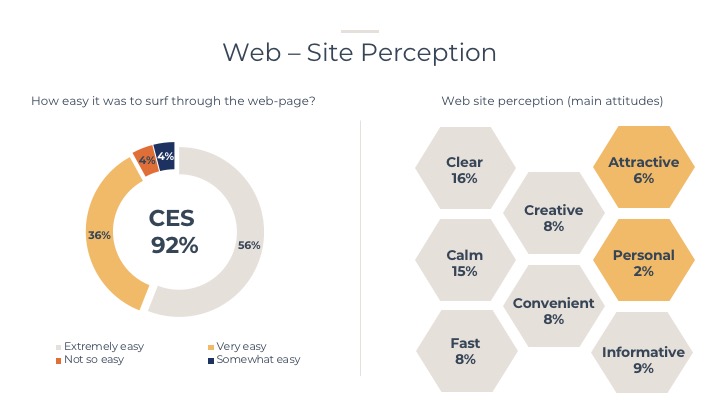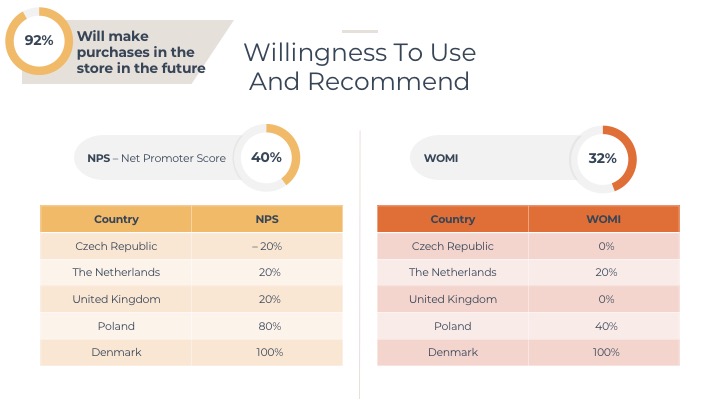Retail Industry Research - How did retail handle the crisis, or the story of one famous brand that can't be named...
Quarantine has confused plans and negated long-term planning. In an uncertain and unpredictable environment, organisations and their leaders need to be flexible. Flexible cost management, flexible working hours, flexible payroll, flexibility in dealing with suppliers and tenants. No more dogma, all conditions can be changed or revised.
Offline retail is a traditionally conservative industry with a long decision-making process and long project launching. But nowadays, business that has been introducing changes too long is unviable, and it will lose to more active competitors.
In order to find out how flexible the giants of the industry can become, we conducted a study where respondents from 5 European countries participated. In the context of a well-known chain of stores, we analyzed the brand perception, evaluated the website usability, determined the level of customer loyalty and indicator of future growth using the basic metrics.

What do customers choose and why?
The company we chose is one of the leaders in their industry from Sweden. With 20% of the market, it is the second most recognizable brand out of its 25 competitors. As it turned out, 24% of respondents prefer to shop online using various applications. And 8% prefer to order directly from a brand store. Although the number of people willing to shop in stores (44%) and shopping malls (24%) gives a higher percentage in total, it is admitted that online shopping has a lot of advantages.
The following conveniences are most appreciated by respondents:
- Time Saving
- Home Delivery
- Available 24 hours
- Opportunity to compare products
- Low prices as compared to offline
- Feedback from other customers
Also, the clients prefer digital method of payment rather than collect on delivery (which was absolutely opposite until recently).
- 80% prefer delivery instead of picking up the goods themselves
- 96% prefer to pay for goods online
What effect do your customers expect?
The GfK analysts calculated that Internet sales should grow at least four times to compensate for complete shop closures during the pandemic. This means that omnichannel in retail is no longer a trendy word but a necessity. And the preferences of our respondents prove that.
Because of the quarantine many people will try to order something on the Internet for the first time, and if their customer experience is successful, they will continue to order online even after the quarantine.
What is important when buying a product?
- 30% believe that the main thing is product quality
- 22% want to make themselves safe and choose a warranty
- 21% consider discounts
- 14% worry about the quality of delivery service
- To a lesser extent, when purchasing online people also take into account consultant recommendations (7%), 24-hour support (5%) and customer service (1%).
What were the clients looking for during the quarantine?
Your clients were looking for your website. If you don't have one, this is a huge problem. And if you do, you shouldn't sit back and relax either.
74% of online consumers are disappointed with a website if it shows content (e.g. offers, advertisements, promotions) that has nothing to do with their interests.
Overall, the site under review scored well. Reliability (100%), speed (92%), features (88%) met user expectations. The only element of concern was the interface — the very first thing that a user pays attention to (76%).
The main user claims concerned:
- banners with irrelevant information;
- a lot of pop up windows with unhelpful or outdated information;
- no filter by different criteria available (by price only).

Even small issues can affect the impression of you as a brand. Because of hard sell, irrelevant information and a clumsy user interface you can lose a potential client forever. Are you OK with that?
It is worth checking your site regularly. For this purpose, there is a special service called UI|UX testing. This is what helps to increase your site’s rating not only in Google, but also in the eyes of your clients.
Feedback we deserve
We were not surprised to discover that 84% of respondents read the reviews before making a purchase. These are the advantages of the modern world. We can discover full information about a product in a couple of clicks.
When customers share their opinion, it is worth being ready for surprises, too. People who used your products and services as well as those who heard something about you or just visited your shop leave feedback.

There are many places where consumers discuss the brands. Our respondents often turn to:
- Google - 37%;
- Reviews on product pages - 23%;
- Store’s website reviews - 17%;
- Company’s and Trustpilot websites - 7% each;
- Facebook and forums - 3%.
Your asset is your brand and your customers. Keep in touch with your clients at all times. Respond to their requests, complaints and praises. This is the only way you can reckon on their loyalty.
What's next?
Summarizing the results of the study, we can assume that the assortment, prices and quality of products are positively perceived by the customers. But according to the satisfaction of needs, we can note that the service is not unique. Consumers have a wide range of brands to compare with other similar companies, which can lead to customer outflow and drop in sales.

What should you do in this case? Catch the proven instruction!
- Create a customer journey map. Tracking customer experience (CX) involves working on all stages and points of interaction with a client. For an effective CJM it is required to define the goals, analyze the target audience, map customer needs and analyze competitors.
- Be accessible. For some businesses, skipping a particular communication channel means losing part of the audience. Companies that use all available sources to attract consumers (websites, social networks, emails) have created an army of loyal customers.
- Test your digital solutions. If you do not use all available channels yet, if you are going to launch a new digital product or are developing software, product testing is essential for its successful release. Testing digital products will protect you from product errors and financial losses associated with the customer outflow because of those bugs.
- Improve your service. Make your customers happy, build an army of fans of your brand, provide them with an exceptional level of service, whether digital or not, and your business will have no choice but to succeed. With regular testing of your services, distribution checks and mystery shopper checks especially when the digital and the real world are merging, success will follow.
- Improve your product. Even if it seems there is no room for improvement, this is just your misconception. After all, every year a new iPhone model is released. You may argue that the quality of a new product is not always better than its previous version, and old bugs turn out to be very useful features. To avoid this, see paragraph 3.


Natali Nesterenko
PR Manager
Mystery Shopping Director at Scheduling Worldwide









